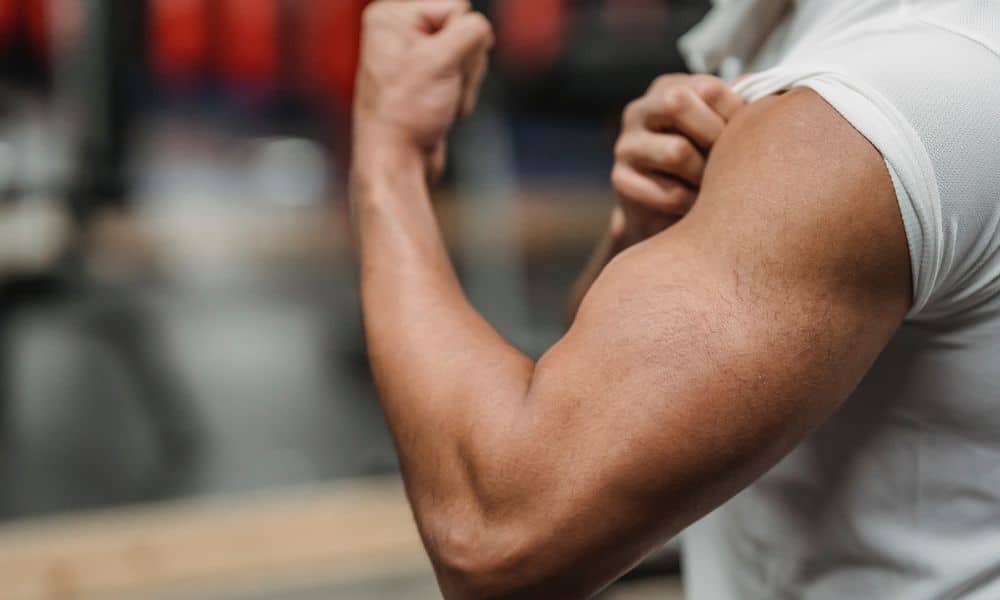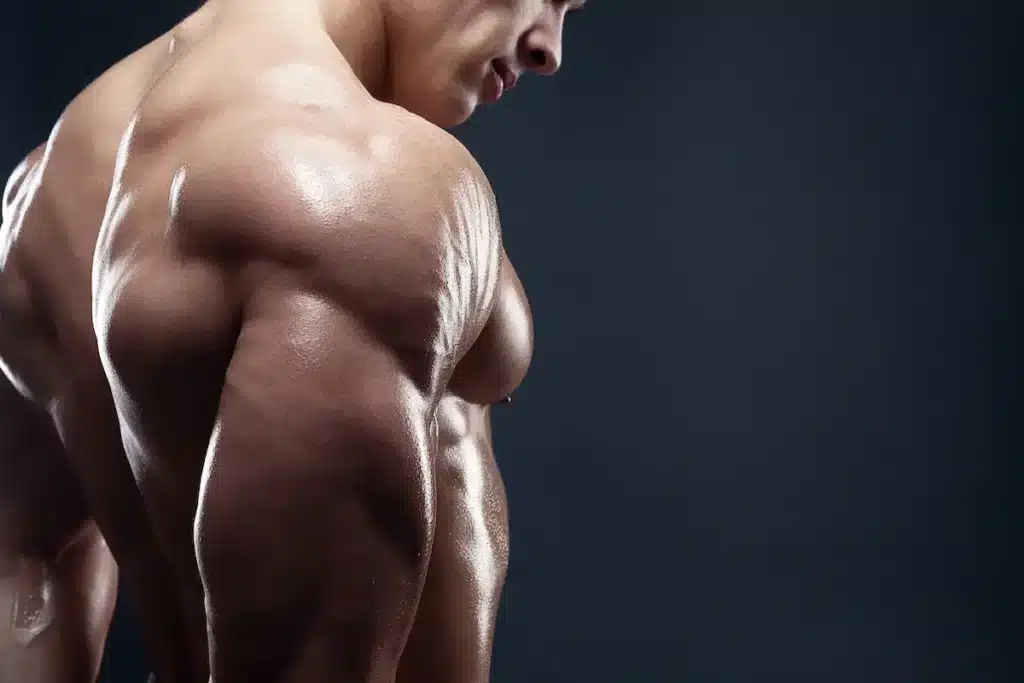The bicep and the tricep are arguably two of the most popular muscle groups. Almost every new lifter gets into the gym with two goals: Build an enormous chest and attain impressive arms. But, to train your arms optimally, we need to learn what the bicep and tricep are. We need to find out how they differ and what that means. Let’s dive in.
The Bicep 101: A Broad Overview
The bicep is a muscle on the front side of the upper arm. Its primary functions are elbow flexion and wrist supination. As its name suggests, the biceps has two heads–long and short. Both of them originate from the scapula and insert into the elbow.
The Tricep 101: What You Should Know
The tricep is a muscle on the upper arm’s backside, and its primary function is elbow extension (straightening the arm). Also, the tricep has three heads–medial, long, and lateral, unlike the bicep. The medial and lateral heads originate from the humerus and insert into the elbow.
However, the long head also crosses the elbow joint as it originates from the scapula. Because of that, the long head is also involved in arm adduction (bringing your arms in) and shoulder stability.
The Bicep vs. The Tricep: How Are They Different?
Now that we have a basic understanding of the two muscles let’s see what the primary differences are:
- Location
The most apparent difference between the two muscles is their location. Where the tricep covers the backside of your upper arm, the bicep covers the front.
- Anatomy and Structure
The next significant difference between the two muscles is their anatomy. The tricep has three heads, whereas the bicep has two. Thanks to their inherent differences in anatomy, location, and structure, the two muscles differ in size, shape, and function.
- Size
It may surprise some folks, but the tricep is a more massive muscle, as it makes up roughly two-thirds of the upper arm, whereas the bicep takes up about a third of the entire volume. So, while most people flex their biceps to show how developed their arms are, the tricep is a more massive muscle.
- Functions
The last and most significant difference between the bicep and tricep is their functions and how they relate. The two muscles have an agonist-antagonist relationship, which means that whenever your bicep shortens, the tricep lengthens and vice versa.
The bicep primarily serves to flex your elbow (such as during a curl), which causes your tricep to lengthen. Then, the bicep lengthens as you extend your elbow and the tricep shortens. When doing an exercise that causes elbow extension (such as tricep cable extensions), your tricep primarily does the work by compressing. Meanwhile, your bicep lengthens.
Last words on the bicep vs. the tricep: how are they different
In simpler terms, the two muscles have opposing functions–if one contracts concentrically, the other has no choice but to lengthen. Thus, the biceps respond to pull exercises such as curls, rows, and pull-ups, while the triceps respond to push exercises such as bench presses, dips, and shoulder presses.
It would help if you paid more attention to the triceps because they make the arms look more prominent and are used on more compound lifts. Thus, this means they have more functional importance. Also, Triceps make you look more muscular.
If you or someone you know is considering bodybuilding, share this article on Facebook or Twitter so that others can learn more about building muscle.




